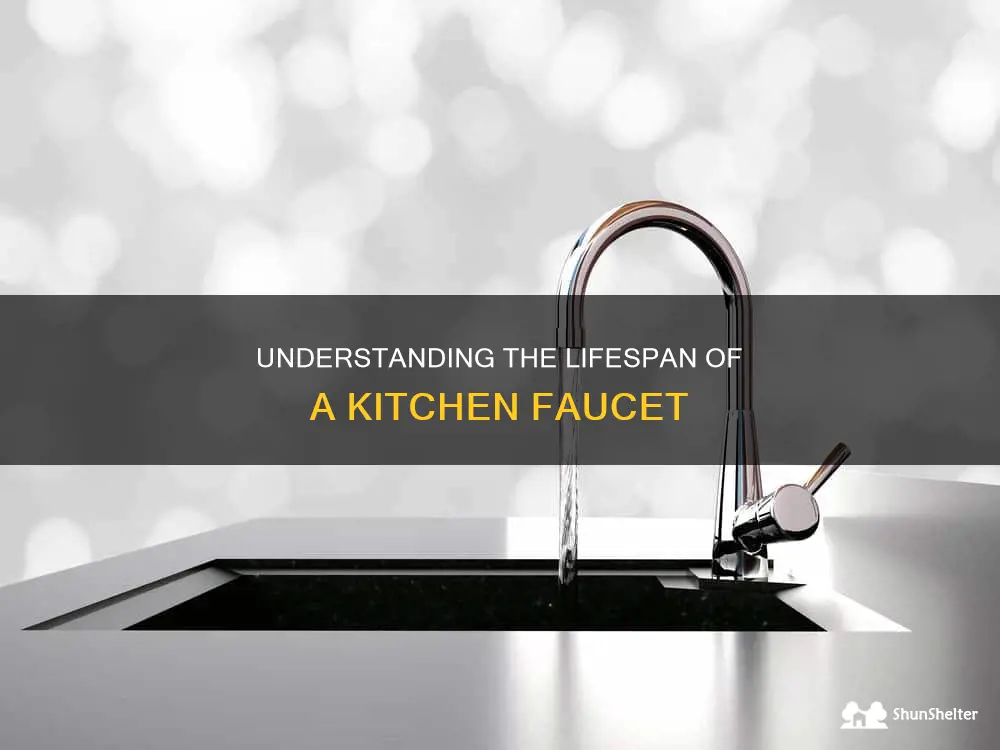
The life of a kitchen faucet may seem mundane at first glance, but upon closer inspection, it reveals a world of constant activity, vital to the workings of a bustling household. From morning coffee and breakfast preparations to dinner clean-ups and midnight snacks, the kitchen faucet plays a vital role in our daily routines. It is a silent witness to countless conversations, moments of inspiration, and practicality, making it an indispensable part of our lives. So, let's take a closer look at the life of this unsung hero, the kitchen faucet, and discover the hidden stories behind its simple yet essential existence.
What You'll Learn

The Life of a Kitchen Faucet
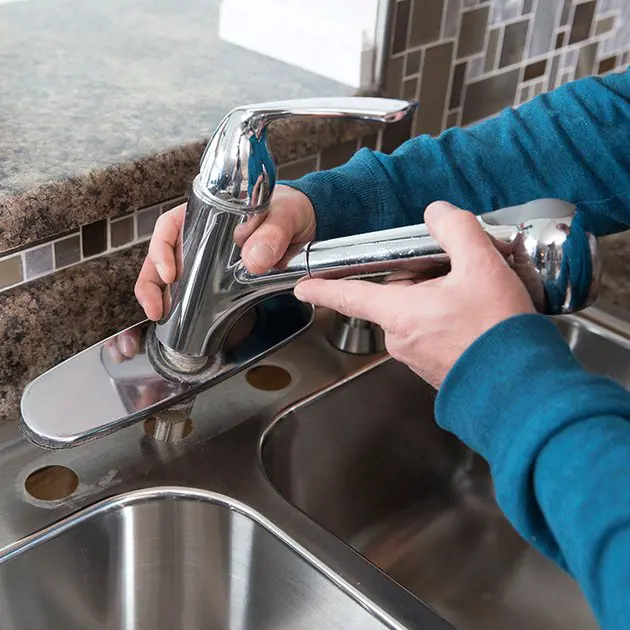
The Lifespan of a Kitchen Faucet: Factors that Affect Longevity and Signs of a Worn-Out Faucet
A kitchen faucet is an integral part of the kitchen and plays a crucial role in our daily lives. From washing dishes to filling pots, we rely on our kitchen faucet for a variety of tasks. However, like any other household item, a kitchen faucet has a limited lifespan. Understanding the lifespan of a kitchen faucet, the factors that affect its longevity, and the signs of a worn-out faucet can help you maintain your faucet and know when it's time for a replacement.
The lifespan of a kitchen faucet can vary depending on various factors. On average, a well-maintained faucet can last anywhere from 10 to 20 years. However, some factors can significantly affect its longevity.
One of the key factors that determine the lifespan of a kitchen faucet is the material used in its construction. Faucets made from high-quality materials such as solid brass or stainless steel tend to have a longer lifespan compared to those made from low-grade materials like plastic or zinc alloy. These high-quality materials are durable, resistant to corrosion, and can withstand the daily wear and tear of kitchen use.
Another important factor that affects the lifespan of a kitchen faucet is the quality of its internal components. Faucets with high-quality ceramic disc cartridges last longer than those with rubber washers. Ceramic disc cartridges are more reliable, require less maintenance, and are less susceptible to leaks and drips. Investing in a faucet with quality internal components can save you from premature replacements and costly repairs.
Proper maintenance also plays a crucial role in prolonging the lifespan of a kitchen faucet. Regular cleaning and proactive maintenance can help prevent mineral build-up, which can affect the faucet's functionality and lead to leaks. Cleaning the faucet regularly with a mixture of vinegar and water can remove mineral deposits and keep the faucet looking new. It's also important to check for any loose fittings or connections and address them promptly.
Despite regular maintenance and care, a kitchen faucet will inevitably show signs of wear and tear over time. Recognizing these signs is essential to avoid further damage and ensure the safety and functionality of your faucet.
One of the most common signs of a worn-out faucet is persistent leaks. If you notice water dripping from the spout or handle even after it's fully turned off, it may be an indication that the internal components are failing or worn out. Another sign of a worn-out faucet is reduced water pressure. If your faucet starts to lose pressure or the water stream becomes irregular, it could be an indication of mineral buildup or a failing cartridge.
Other signs to look out for include stiff or loose handles, difficulty in turning on or off the faucet, or rust and corrosion on the exterior. These signs may indicate that the faucet has reached the end of its lifespan and needs to be replaced.
In conclusion, understanding the lifespan of a kitchen faucet, the factors that affect its longevity, and the signs of a worn-out faucet is essential for every homeowner. By investing in a high-quality faucet, maintaining it properly, and recognizing signs of wear, you can ensure the longevity and functionality of your kitchen faucet. Remember, when in doubt, it's always best to consult a professional plumber to assess the condition of your faucet and recommend the right course of action.
How to Determine the Cost of a Good Kitchen Faucet
You may want to see also

Maintenance and Care Tips
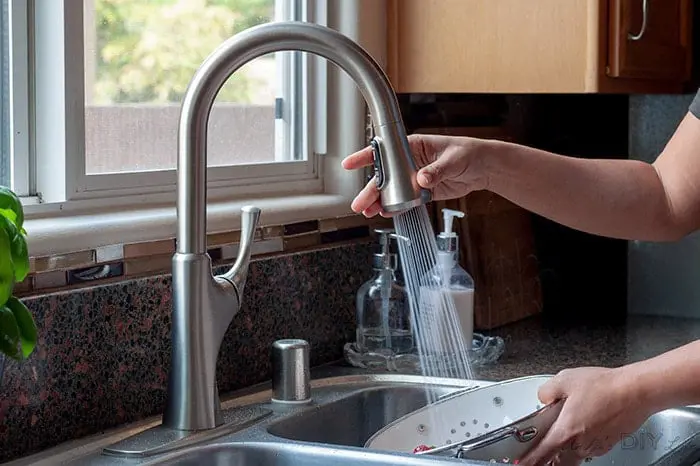
Regular Cleaning and Maintenance:
Regular cleaning and maintenance of your faucet is essential to keep it functioning properly and prolong its lifespan. Here are some tips to help you in this regard.
First, start by turning off the water supply to the faucet. This will prevent any accidental water leakage while you are cleaning or performing maintenance tasks.
Next, remove any visible debris or mineral deposits from the aerator. The aerator is the small mesh-covered part on the faucet tip. Unscrew it by turning it counterclockwise and use a toothbrush or a small brush to clean off any buildup. Rinse it thoroughly with warm water before reattaching it to the faucet.
Cleaning the Faucet Exterior:
The exterior of your faucet can collect dirt, stains, and fingerprints over time. To clean it, mix a solution of warm water and mild dish soap. Dip a soft cloth or sponge into the solution and gently scrub the faucet, paying special attention to the hard-to-reach areas.
For stubborn stains or mineral deposits, you can use a mixture of equal parts white vinegar and water. Apply this solution to a cloth and wipe the affected areas. Be sure to rinse the faucet thoroughly afterward to remove any residue.
Ensuring Smooth Operation:
To ensure your faucet operates smoothly, you need to keep all movable parts clean and lubricated. One such part is the cartridge or valve assembly. Depending on the type of faucet you have, you may need to remove the handle or trim to access this component.
Once you have access to the cartridge or valve assembly, use a rag to wipe away any dirt or debris. Apply a small amount of silicone-based lubricant to the O-rings and other moving parts. This will help reduce friction and ensure smooth operation.
Preventing Damage and Extending Lifespan:
To prevent damage and extend the lifespan of your faucet, it's important to use it properly and handle it with care. Avoid using excessive force when turning the handle, as this can damage the internal components. Also, be mindful of the water pressure. Using high water pressure constantly can put stress on the faucet and lead to leaks or premature wear.
Additionally, do not hang heavy objects on the faucet, as this can cause it to bend or break. If you have children, instruct them not to lean or hang on the faucet, as this can also cause damage.
Avoiding Harsh Chemicals:
When cleaning your faucet, it's important to avoid using harsh chemicals or abrasive cleaning products. These can damage the faucet's finish and potentially harm the internal components.
Instead, stick to mild dish soap, white vinegar, or specialized faucet cleaners that are specifically designed for use on faucets. These gentle cleaning agents will effectively remove dirt and stains without causing any harm.
Fixing Dripping Faucets:
If your faucet is dripping, it's important to address the issue promptly to prevent water waste and further damage. The most common cause of a dripping faucet is a worn-out or faulty rubber washer or O-ring inside the cartridge or valve assembly.
To fix a dripping faucet, start by turning off the water supply. Then, disassemble the faucet by removing the handle and trim, if necessary. Locate the rubber washer or O-ring and replace it with a new one.
Reassemble the faucet, turn the water supply back on, and check for any leaks. If the faucet is still dripping, it may require further inspection or the assistance of a professional plumber.
By following these maintenance and care tips, you can keep your faucet clean, functional, and in good condition for years to come. Remember to perform regular cleaning, handle the faucet with care, and address any issues promptly to prevent further damage.
A Guide to Removing a Kitchen Faucet Cover Plate with Ease
You may want to see also

Repairing and Replacing a Faucet
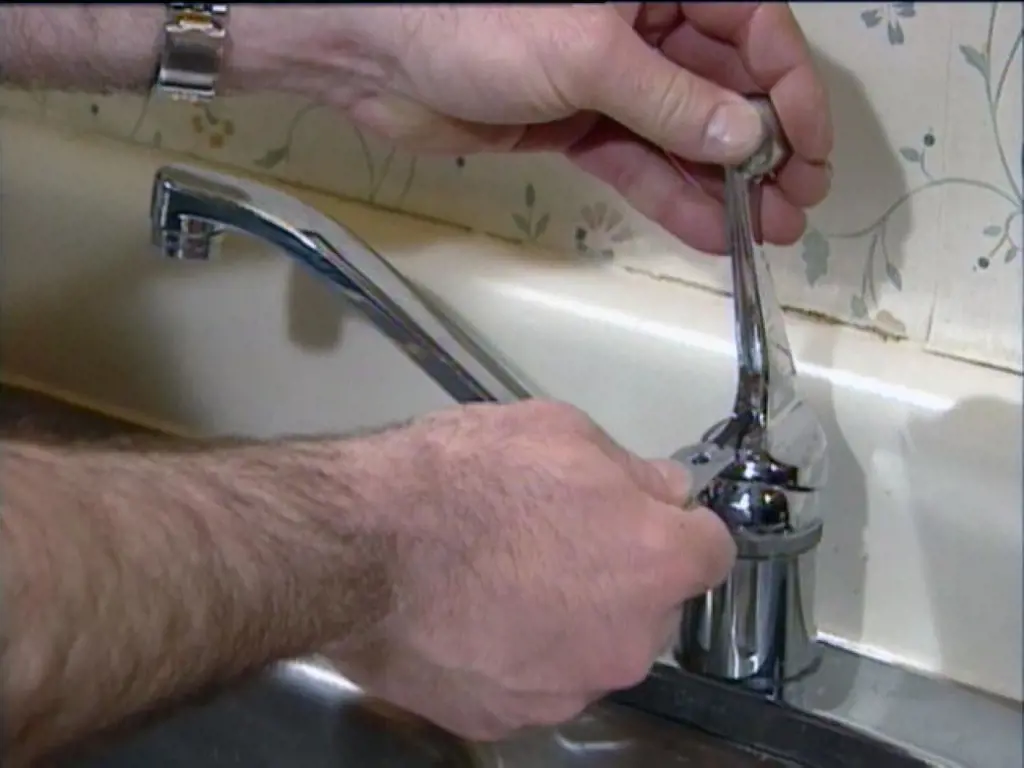
One of the most common faucet problems is a leaking or dripping faucet. Not only can this be annoying, but it can also lead to wasted water and increased utility bills. To fix this issue, start by shutting off the water supply to the faucet. Disassemble the faucet, remove the old cartridge or valve, and replace it with a new one. Be sure to use the correct replacement part for your faucet model, as there are different types of cartridges and valves.
Another common issue is low water pressure. If you notice that your faucet is not producing the same forceful stream of water as before, there are a few potential causes. First, check for any blockages or debris in the faucet aerator. This small screen located at the end of the faucet can become clogged with mineral deposits or sediment over time. Remove the aerator and clean it thoroughly with vinegar or a lime-dissolving solution. If the problem persists, there may be a larger issue with the water supply line, in which case you may need to consult a professional plumber.
A loose or broken handle is another common faucet problem that can be easily fixed. If the handle wiggles or falls off completely, you may need to tighten or replace the handle's setscrew. To do this, remove the decorative cap or cover on the handle and use an Allen wrench to tighten the setscrew. If the handle is broken or cannot be fixed, you can usually purchase a replacement handle from the faucet manufacturer or a hardware store.
For minor faucet repairs, DIY solutions are often sufficient. Replacing worn-out O-rings or washers is a common repair that can help fix leaks around the base of the faucet or handles. To do this, turn off the water supply, disassemble the faucet, and replace the O-rings or washers with new ones. It's important to use the correct size and type of O-rings or washers for your faucet, as using the wrong ones can cause further leaks or damage.
Tightening loose connections is another simple DIY fix for faucet problems. Over time, the connections between the faucet and the water supply lines can become loose, causing leaks or drips. Use an adjustable wrench or pliers to tighten the connection nuts until they are secure. Be careful not to overtighten, as this can cause damage.
While many faucet problems can be resolved with repairs, there may come a time when replacement is necessary. Some issues, such as irreparable damage to the faucet body or valve, may require a complete replacement. Additionally, if you have an outdated or inefficient faucet, it may be worth considering replacement for aesthetic or functional reasons.
If you choose to replace your faucet, you have a wide range of options to choose from. Modern faucets come in a variety of styles, finishes, and features to suit your personal taste and needs. Look for faucets with water-saving features like low-flow aerators or sensor activation, which can help reduce water consumption and utility costs.
In conclusion, repairing and replacing a faucet can solve common problems like leaking, low water pressure, loose handles, and more. DIY repairs such as replacing O-rings or washers and tightening loose connections can often fix these issues. However, if the damage is irreparable or you have an outdated faucet, replacement may be the best option. Consider upgrading to a more efficient and stylish faucet to improve the overall function and appearance of your bathroom or kitchen.
How to Fix a Loose Kitchen Handle on a Faucet
You may want to see also

Choosing a Durable Kitchen Faucet
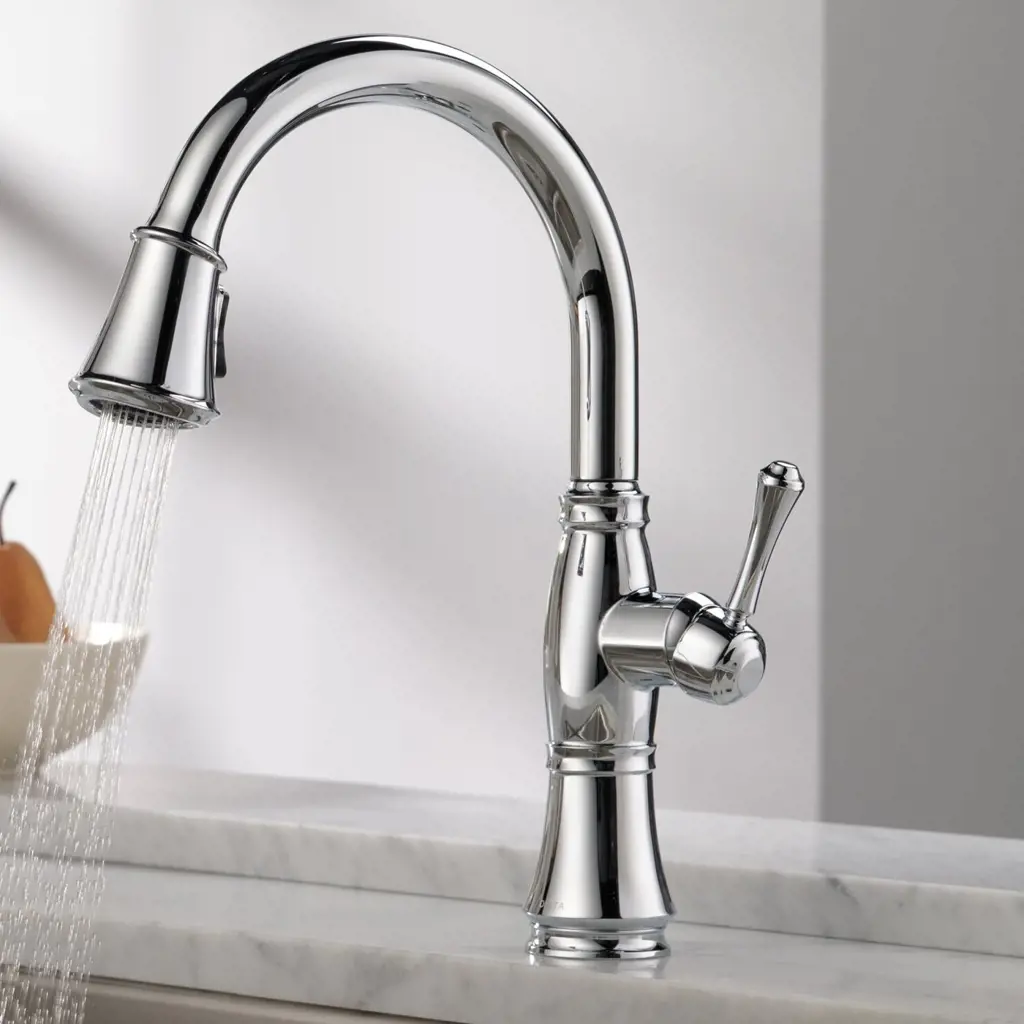
When it comes to your kitchen faucet, durability is undoubtedly a crucial factor to consider. After all, a kitchen faucet is one of the most frequently used fixtures in your home, and investing in a durable option will ensure long-lasting functionality. In this article, we will explore the various aspects to consider when choosing a durable kitchen faucet.
Material Quality and Durability
The material quality of a kitchen faucet is a key determinant of its durability. Faucets made of high-quality materials tend to withstand the test of time and provide reliable performance for years to come. Stainless steel and brass are two popular materials known for their longevity in kitchen faucets.
Stainless Steel Faucets
Stainless steel faucets are not only aesthetically pleasing but also exceptionally durable. They are resistant to corrosion, scratches, and tarnishing, making them an ideal choice for a durable kitchen faucet. Moreover, stainless steel faucets are easy to clean, ensuring that they maintain their pristine appearance for an extended period.
Brass Faucets
Brass faucets are another excellent option for those seeking durability and longevity. Known for their sturdiness, brass faucets can withstand the rigors of daily use and are less likely to develop leaks over time. Furthermore, they provide a timeless and elegant look to your kitchen decor.
Ceramic Disc Cartridges
In addition to the material, the internal components of a kitchen faucet also play a significant role in its durability. One such component is the cartridge, responsible for regulating water flow and temperature. A ceramic disc cartridge is highly recommended for its durability and longevity. Unlike rubber or plastic cartridges, ceramic discs do not wear out easily and provide a smooth and drip-free operation.
Features for Longevity
When choosing a durable kitchen faucet, look for features that enhance its lifespan. For example, an aerator is a small attachment that mixes air with the water flow, reducing splashing and saving water. A built-in water filter can also help prolong the life of your faucet by preventing debris and mineral buildup.
Single Handle or Double Handle
Deciding between a single handle or double handle faucet can also impact its durability. Single handle faucets are typically more durable as they have fewer moving parts and fewer potential areas for leaks. On the other hand, double handle faucets offer separate controls for hot and cold water, but the additional moving parts can increase the risk of wear and tear.
Sprayer Options
If you frequently use your kitchen faucet for heavy-duty tasks, such as rinsing dishes or washing fruits and vegetables, consider a faucet with a sprayer. Look for a pull-out or pull-down sprayer made of durable materials to ensure it can handle the demands of frequent use.
Quality Brands and Warranties
Finally, investing in a faucet from a reputable brand can greatly enhance its durability. Recognized brands often produce high-quality products with better materials and craftsmanship. Additionally, purchasing a faucet with a warranty provides you with peace of mind, knowing that the manufacturer stands behind the product's durability.
In conclusion, choosing a durable kitchen faucet requires careful consideration of various factors. Opt for faucets made of durable materials such as stainless steel or brass, with ceramic disc cartridges for long-lasting performance. Look for features like aerators and water filters that can enhance durability. Decide between single handle or double handle faucets based on your needs. Consider adding a sprayer for heavy-duty use, and choose a reputable brand with a good warranty. By taking these factors into account, you can choose a kitchen faucet that will withstand the test of time and provide reliable performance for years to come.
The Ultimate Guide to Uninstalling a Kitchen Island
You may want to see also
Frequently asked questions
A kitchen faucet typically lasts around 10 to 15 years, depending on the quality of the faucet and the frequency of use. Cheaper faucets may have a shorter lifespan, while higher-end faucets with better materials and construction can last even longer.
Several factors can affect the lifespan of a kitchen faucet. These include the quality of the faucet, the water quality in your area, and the frequency of use. Hard water with high mineral content can cause corrosion and buildup, leading to a shorter lifespan. Similarly, frequent use can put more strain on the faucet and may result in worn-out parts or leaks.
There are a few signs that a kitchen faucet may need to be replaced. These include persistent leaks that cannot be fixed, reduced water flow or pressure, rust or corrosion on the faucet, and a loose or wobbly handle. If repairs do not resolve these issues, it may be time for a new faucet.
In many cases, a kitchen faucet can be repaired instead of replaced. Common issues such as leaks or clogs can often be fixed with simple repairs or by replacing certain parts. However, if a faucet is old, severely damaged, or the repairs are not cost-effective, it may be more practical to replace the faucet entirely.
To prolong the life of a kitchen faucet, regular maintenance is important. This includes cleaning the faucet regularly to remove buildup and prevent corrosion. Avoid using harsh chemicals or abrasive materials that can damage the finish. Additionally, promptly fix any leaks or issues to prevent further damage.







